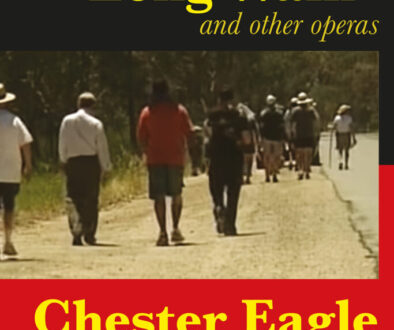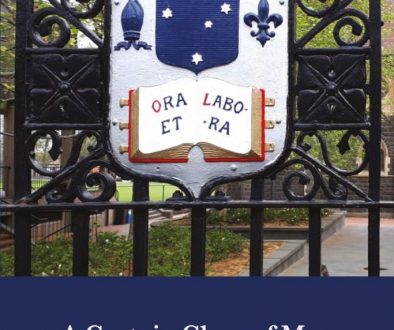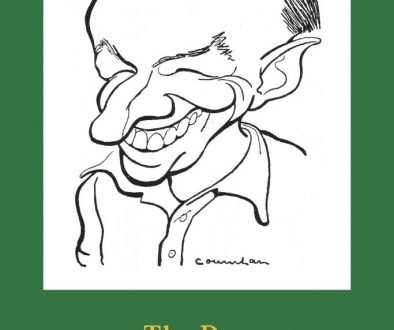Four faces, wobbly mirror

Simple yet elusive, down to earth yet haunting, Four Faces, Wobbly Mirror concerns two apparently well-matched couples who, at the outset of the story, have little more than a dinner-party acquaintance with each other. Yet a crossover of affections takes place between the partners and two new relationships develop – one inhibited but passionate, the other more freely sexual though still bound by personal limitations.
As the book ends it seems that little has changed … but it is plain that all four characters have passed through an important stage of their development, and that all they did was inherent in their lives until the subdued and half-veiled crises which gave the novel one of its themes.
The novel is also concerned with the sheer difficulty of comprehending ourselves. Where do we look? Inward, to the confusion of our impulses? Or outward, to where the media men and all the other spielers who shape our mental and conceptual worlds are waiting with their glib word-spinning?
To look this latter way, the book suggests, is to look into a wobbly mirror. Yet a feature of this novel is that the four main characters are made clear despite the confusion of their emotions and their varied social settings. The reader gradually discerns a consistency in their personalities, and the wobbly mirror, too, is brought into some degree of focus.
Written by Chester Eagle
Cover by Vane Lindesay
First published 1976 by Wren Publishing
2,090 copies printed
Circa 104,000 words
Electronic publication by Trojan Press (2006)
The writing of this book:
In 1974 I had a second Literature Board grant. Inflation had struck and my $6000 grant was very tight as an allowance for a year, but we got through by putting bills aside until the next monthly instalment came. This novel is very different in style from its predecessor, mainly, I think, because I was accepting of the fact that the country had changed. The counter-culture had swept through everything, and many old verities had collapsed. People who felt that marriage had brought stability to their lives discovered that what had come to be known as ‘relationships’ were everywhere. Respectability had died a death. Control of our society’s mental world had moved from churches and traditions enshrined in custom and literature to the makers of banner headlines. Sexual desire was no longer treated with apology but had become natural, and was thought to need fulfilment.
In Four faces, wobbly mirror the inner voices of its predecessor give way to slogans, headlines, ideological grabs:
LESBIANS ARE LOVELY
HOMOSEXUAL SWIMMING – ENJOY THE THRILL YOU’VE MISSED
SEXIST
CHRIST CHUNDERS AT CONGRESS
STOP SNEDDEN GO GOUGH
SNEDDEN PM? YOU’VE GOT TO BE JOKING
Everyone seemed to be thinking that way and following the thought with action. It was a heady time and the éclat made its way into the political world, at least for a time, as the book tries to show.
Dennis Wren wanted the book but he said it was too slow. I took it to Hilary McPhee, who was still with Heinemann. She told me she agreed with Dennis, and that the first quarter of the book needed heavy cutting. I looked closely and decided she was right. I went through the first seventy pages or so, cutting words at every opportunity. I tried to make the pace of the book even throughout; intensity might rise and fall but the speed of movement should be fairly constant. I am grateful to Dennis and to Hilary for giving me this awareness and as far as I know the problem hasn’t recurred.
Some of my work colleagues read the book when it came out and I recall something that happened when we were gathered for a farewell to someone who was leaving. One person was talking excitedly to a group when I approached. They all looked at me then turned away, and something said to me later made me aware that they had been talking about an incident (page 100 in the 1986 book) which I had borrowed from a story told to us by a former colleague whose life had been very much in the current of the times. What none of them had realised, as far as I was aware, was that one of the four ‘faces’ of the book was based on another of their colleagues. I had borrowed this man’s personality for my character but had given him rather different social descriptors, and none of those who knew the man had ‘recognised’ him. Nor, perhaps, should they; it is common for people to think that writers are forever writing romans à clef, when most writers are not. My colleagues, I felt, thought they had caught me out but I felt I had found them wanting. It may be that I am under-estimating them, but nobody ever brought the matter of characters’ origins into discussion with me; writers rarely find readers who talk about books on writers’ terms. I am still undecided as to whether this is a shortcoming, or whether it is the right of readers to take their books in the ways they want to, or need to, in which case writers are mere providers. I link this matter to the way in which writers are treated with a mixture of reverence and dislike; there is an unresolved power struggle going on, I feel.
A word about Wren Publishing. Four faces, wobbly mirror was in production when I became aware that Dennis was in trouble. He’d put a lot of money into a book that he hoped would be a succés de scandale. His printer, however, was one of his financial backers, and someone at the printery was worried about possible libel actions. The printers refused to release the book but still charged Wren Publishing for the job. Dennis haggled, but the end was in sight. Would my book get out in time? Only just. I had the satisfaction of seeing it in a Katoomba bookshop while I was on holiday with my wife and children, then the Wren business folded, and the book disappeared without further trace. I bought up 200 copies and started my present practice of giving them to anyone who looked like a possible reader. Vale, Dennis!



